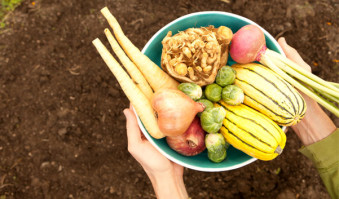Trees are a great addition to the garden, providing shade on hot summer days and habitat for wild birds. Many put on a gorgeous show of fall color. But how do you choose a tree and how do you plant it?
Gardening whiz Ciscoe Morris says fall is a great time to adopt a tree.
“There’s plenty of time for them to keep growing roots,” he says. “They’ll stop growing once the hard freezes come and in spring they’ll take off like a rabbit. The tree will have a good root system and they’ll be better prepared to deal with drought.”
Another reason to plant in fall is you can choose a tree that has fabulous fall color and know it will bring that vibrancy to your yard year after year.
However, any tree that you plant in your garden or backyard may require some upkeep, such as pruning, crown reduction, and so on, which can be accomplished by hiring professionals from tree maintenance service providers such as Star Tree Surgeon Watford. Proper tree cleaning may also help them grow because you’d be constantly removing anything that might be impeding their growth.
Planning
Your first step is to determine where you want to plant a tree. It’s best not to plant under powerlines, but the City of Seattle’s Street Tree List provides information about tree size and which ones can be planted near buildings or under powerlines, as well as which ones bloom profusely or provide fall color.
“The old ‘right plant right place’ is kinda the mantra for garden experts,” says Ciscoe. “It should be for everyone because you want to follow what it says on the label. If it says shade and you stick it in sun you’re going to burn the living tweedle out of it.”
Some trees quickly grow very tall and very wide.
“The biggest warning I can give is make sure you see how big the tree’s ultimately going to get,” says Ciscoe.
A living Christmas tree or a little maple looks cute next to the house, but when it grows so large it towers above the roof, that’s a problem.
“Picking the right tree in the first place can make a big difference in keeping it healthy and attractive,” says Ciscoe.
It’s important to know what kind of soil and drainage you have. Ciscoe recommends a test: Dig a one-foot-square hole one foot deep and fill it with water. Time how much water drains in an hour.
“If an inch of water doesn’t drain in an hour you’ve got clay or hard pan soil,” he says. “You’ll have to bring in a lot of manufactured topsoil.”
Ciscoe says trees known to be able to grow in clay include red maple, sweet gum and alder.
“Hardly any evergreens can grow in clay,” he says. “No fruit trees I know can grow in clay.”
“But if you build a wide berm and get 2/3 of the roots out of the soil you can grow anything,” he says. “It gives the roots room to stretch out.”
Choosing
Ciscoe’s tree favorites include Japanese maple, crape myrtle, hinoki cypress and the Chilean fire tree.
“I’m crazy about Japanese maples,” he says. “They come in every size and shape.”
“The Chilean fire tree is a spectacular tree, it’s at least 45 feet tall. It’s covered with flaming red flowers from mid-April through June. Hummingbirds are all over it,” says Ciscoe.
A tree that provides dazzling golden color in the fall is the ginkgo biloba tree, which Ciscoe describes as being tough and long-lived.
“As long as you give them a sunny location, well-drained soil, and water regularly until they establish good roots, they practically take care of themselves,” says Ciscoe. In regular intervals, you might need to call a Tallahassee Arborist (from Tallahassee Tree Pros or from similar service providers), who can examine the health of the trees and can provide the necessary care like pruning, bracing, and cabling of the trees.
Planting
Be sure not to plant your tree too deeply. Whether it’s a balled and burlapped tree or out of a pot, set it into the planting hole so that the top of the root mass is at or slightly above the ground level. This would make it easier to work on in case something goes wrong during its growth. Any Tree Surgeon would find it easier to work on a tree that’s not rooted too deeply, especially if they need to remove it.
“You never want to plant a tree any deeper than it comes out of the pot,” says Ciscoe. “The roots are used to a certain amount of air in the soil. Even planting a half inch deeper totally changes that and it can kill the tree.”
The width should be at least 1 times the diameter of the root ball.
Water the tree in after you plant it. This will help eliminate air pockets that remain around the roots.
There’s no need to stake the tree unless it’s very unstable or the planting site gets a lot of wind.
“Watch the watering really carefully,” says Ciscoe. “You don’t want to drown it but you want it to have plenty of moisture.”
Mulching your new tree can help prevent moisture loss.
Image by Courtney Hale


